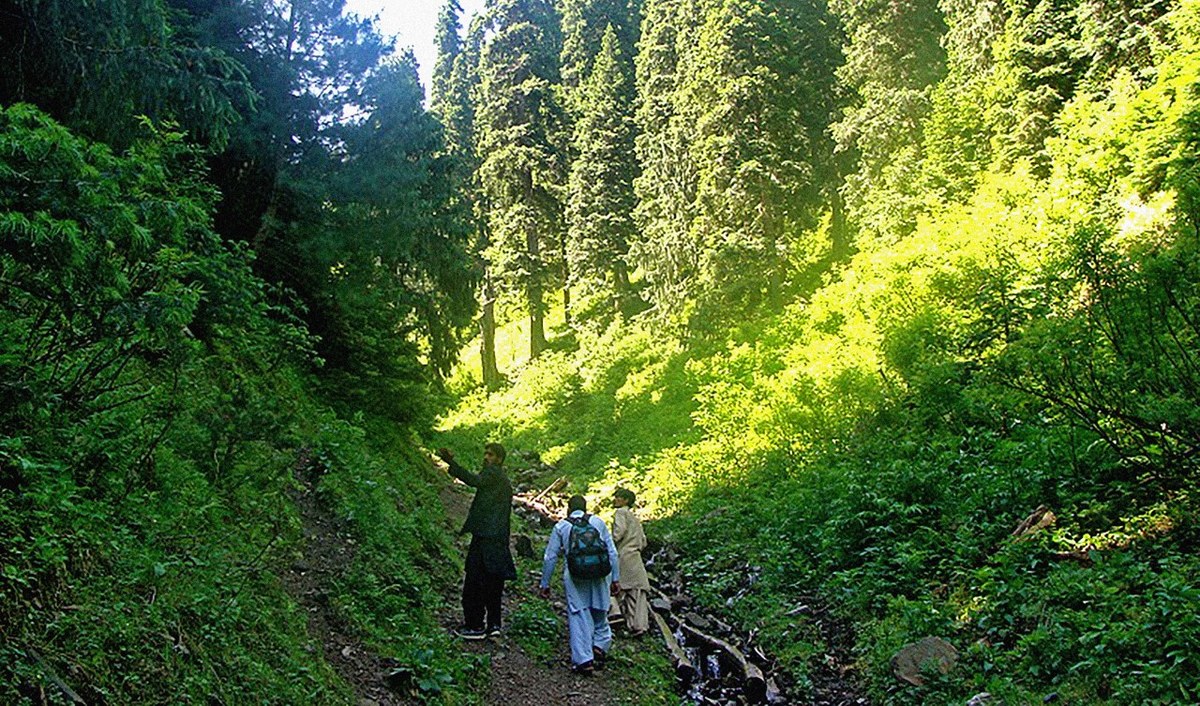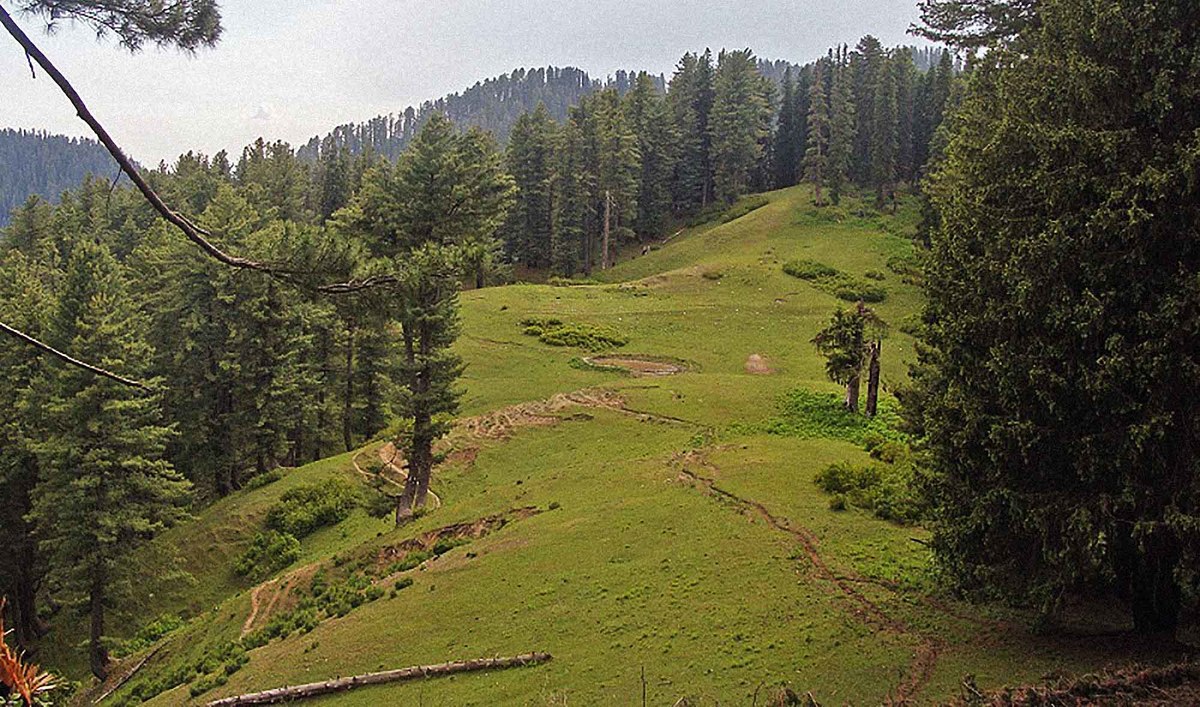PESHAWAR: Pakistan’s northwestern Khyber Pakhtunkhwa province has launched a major wildlife conservation project by designating several new sites in diverse ecological zones as protected areas, a provincial minister told Arab News.
The initiative comes as the UN has declared years 2021 through 2030 as the Decade on Ecosystem Restoration.
Given KP’s landmass, it will collectively take the size of these special zones from 10.22 percent to 14.91 percent.
“Our coverage of protected areas is around 15 percent but we intend to increase it to 17 percent in the coming year,” the provincial minister for forest, environment and wildlife, Syed Ishtiaq Urmar, said earlier this week.
“I am sure we will meet our ambitious target and achieve global standards by further increasing the volume of protected areas such as wetlands, national parks and wildlife reserves.”

In this undated photo, backpackers walk past a hillside in Kamal Ban National Park, a protected area in Mansehra district of Pakistan’s Khyber Pakhtunkhwa province. (Photo courtesy: KP Forest Environment & Wildlife Department)
He said that designating appropriate sites as protected areas was helpful for the conservation of flora and fauna, adding it could ultimately reduce environmental challenges such as droughts and flooding.
According to KP’s Wildlife and Biodiversity Act, 2015, wildlife sanctuaries, national parks, biosphere reserves and game reserves all fall under protected areas.
Pakistan is signatory to the United Nations Convention on Biological Diversity, making officials of the wildlife department say they aspire to meet international benchmarks in Khyber Pakhtunkhwa.
“The initiative aims to preserve and rehabilitate threatened or endangered wildlife species in their natural habitats,” KP Forest Environment and Wildlife Department spokesman Latif-ur-Rehman said. “It will play a highly significant role in the protection and conservation of wildlife.”

In this undated photo, backpackers walk past a hillside in Kamal Ban National Park, a protected area in Mansehra district of Pakistan’s Khyber Pakhtunkhwa province. (Photo courtesy: KP Forest Environment & Wildlife Department)
Dr. Muhammad Nafees, who teaches environmental sciences at the Peshawar University, told Arab News that about 12 percent of the country’s land had been declared protected by the government, though the international benchmark was 31 percent.
He said the KP’s initiative was “encouraging,” but the whole country needed to devise a proper management plan for protected areas and infrastructure around them to “ensure effective outcomes.”
He added that the inhabitants of these areas should also be given incentives to make the initiative successful.
“For example, if we want to breed particular species of birds in a certain area, for instance, we will have to completely ban its hunting there,” Nafees said. “Protected areas mean that human activities should be curtailed over there to achieve long-term environmental targets and purposes.”
















